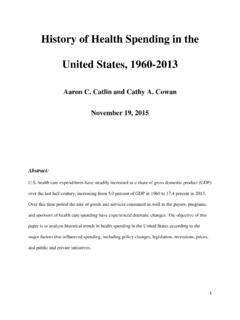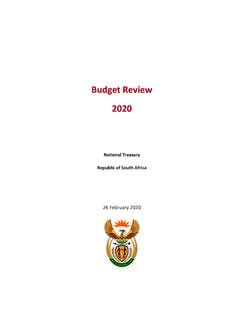Transcription of SERD spread final tyl2.indd 1 11/23/09 12:10 PM
1 SERD spread final 111/23/09 12:10 PMPOVERTYIN THE PHILIPPINESCAUSES, CONSTRAINTS, AND OPPORTUNITIES 2009 Asian development BankAll rights reserved. Published 2009. Printed in the Philippines. ISBN 978-971-561-857-1 Publication Stock No. RPT090621 Cataloging-In-Publication DataAsian development Bank. Poverty in the Philippines: causes, constraints, and City, Philippines: Asian development Bank, Poverty. 2. Philippines. I. Asian development views expressed in this book are those of the authors and do not necessarily reflect the views and policies of the Asian development Bank (ADB) or its Board of Governors or the governments they represent. ADB does not guarantee the accuracy of the data included in this publication and accepts no responsibility for any consequence of their making any designation of or reference to a particular territory or geographic area, or by using the term country in this document, ADB does not intend to make any judgments as to the legal or other status of any territory or areaADB encourages printing or copying information exclusively for personal and noncommercial use with proper acknowledgment of ADB.
2 Users are restricted from reselling, redistributing, or creating derivative works for commercial purposes without the express, written consent of : In this report, $ refers to US dollars, P refers to Philippine development Bank6 ADB Avenue, Mandaluyong City1550 Metro Manila, PhilippinesTel +63 2 632 4444 Fax +63 2 636 orders, contactDepartment of External RelationsFax +63 2 636 OF TABLES, FIGURES, BOXES, AND APPENDIXES .. ivACKNOWLEDGMENTS .. vii ABBREVIATIONS .. viiiPART 1 Executive Summary .. 1 PART 2 Introduction .. 7 PART 3 Poverty Profile .. 9 PART 4 Causes of Poverty .. 39 PART 5 Impacts of Poverty on Economic Growth and development .. 53 PART 6 Institutions and Governance in the Poverty Response .. 61 PART 7 Summary of Key Findings and Recommendations.
3 79 REFERENCES .. 87 APPENDIXES .. 95 ContentsivPoverty in the Philippines: Causes, Constraints, and OpportunitiesLIST OF TABLES, FIGURES, BOXES, AND APPENDIXESTABLES1 Official Sources of Poverty-Related Data112 Poverty Incidence and Gini Coefficient, 1985 2000133 Magnitude of Poverty in the Philippines Population, 1985 2000134 Annual Per Capita Poverty Thresholds, Poverty Incidence, and Magnitude of Poor Families: 2000, 2003, and 2006145 Annual Per Capita Poverty Thresholds, Poverty Incidence, and Magnitude of Poor Population: 2000, 2003, and 2006156 Ranking of Poorest Provinces in the Philippines, 2003 and 2006167 Poorest 20 Municipalities in the Philippines, 2003178 Poverty Incidence and Magnitude by Island Grouping179 Provinces with the Largest Numbers of Poor People1710 Annual Per Capita Food Thresholds, Subsistence Incidence, and Magnitude of Subsistence of Poor Families.
4 2000, 2003, and 20061811 Distribution of Poor and Nonpoor Households in Urban and Rural Areas, 20062012 Income Gap, Poverty Gap, and Severity by Regions2113 Poverty Incidence and Magnitude of Poor Population by Sector, 2000 and 20032214 Distribution of Poor and Nonpoor Households by Family Size2315 Distribution of Poor and Nonpoor Households by Sector of Work of Household Head2316 Distribution of Poor and Nonpoor Households by Occupation of Household Head2417 Components of Per Capita Income of Households, 1997 20062418 Percentage of Families with Access to Minimum Basic Needs, by Income Strata, 2002 and 20042619 Income Inequality, 1985 2006 (Gini Ratio)2720 Comparative Inequality Indicators, Latin America versus Association of Southeast Asian Nations2821 Chronic Poverty Among Poor Filipino Households: Perceived Length of Poverty2922 Survey Data on Chronic Poverty.
5 Recency of Poverty2923 Distribution of Households by Poverty and Vulnerability Status3024 Average Household Size by Poverty and Vulnerability Status, 1997 Philippines Family Income and expenditure Survey3025 Philippine Ranking Comparison with Other Countries Human development Index 20053126 Selected Indicators of Human Poverty for the Philippines, 20043227 Millennium development Goals and Targets3428 Status by Millennium development Goals and Regions36vList of Tables, Figures, Boxes, and Appendixes29 Average Gross Domestic Product Growth Rates, 1960 20073930 Comparative Headcount Index and Number of Poor in the Association of Southeast Asian Nations 4031 Changes in Poverty Incidence for Selected Countries, 1960 19904132 Growth Elasticity of Poverty Reduction4133 ADB Projections for Poverty Incidence by 20204234 Philippines Growth Forecast for 2009 (as of April)4335 Unemployment Rates in East Asia, 2003 20074336 Sector Employment Shares 4437 Population Growth Rates in the Association of Southeast Asian Nations Countries4538 Percentage Point Change in Income Share, 2003 20064639 Gini Ratio of Landholdings4740 Inequality in Labor Market Indicators 4841 Explaining Inequality in Per Capita Labor Income (Theil Index)
6 4942 Distribution of Poor and Nonpoor Households by Access to Financial Markets5543 Infrastructure Indicators in the Philippines, by Region, 1988 and 2004 or 20055644 Pattern of Expenditures by Income Decile, Annual Poverty Indicators Survey, 2002 and 20045745 Pattern of Expenditures by Income Decile, Family Income and Expenditures Survey, 20065746 Current Government Poverty-Related Programs6347 Major Government Institutions Involved in Poverty Reduction6848 National Government Expenditures as a Percentage of Gross Domestic Product, 1990 20067249 Real Per Capita National Government Expenditures in 1985 Prices, 1990 2006 7250 Access to Selected Programs by Quintile7351 Corruption Perception Index, 1998 20087452 Summary of Action Points for Government and Possible Options for Support Immediate and Short Term: Enhance Poverty Framework and Strategy8353 Summary of Action Points for Government and Possible Options for Support Medium and Long Term: Sustain Efforts for Economic and Institutional Reforms85 FIGURES1 Poverty Incidence in Southeast Asia 192 Educational Attainment of Heads of Poor Households 223 Trends in Human development Index, 1975 2005314 Trend in Underemployment Rate, January 1995 200944viPoverty in the Philippines.
7 Causes, Constraints, and OpportunitiesBOXES1 Millennium development Goals Midterm Review from a Civil Society Perspective332 Critique of a Long-Term Government Subsidy Program523 PhilDHRRA Asset Reform Report Card77 APPENDIXES1 Framework for Assessing Poverty in the Philippines952 Poverty Incidence Among Population: Balisacan Estimates vis-a-vis National Statistical Coordination Board983 Annual Per Capita Food Thresholds, Subsistence Incidence, and Magnitude of Subsistence of Poor Population: 2000, 2003, and 2006994 List of Variables for Regression on Poverty Correlates1005 Top and Bottom 10 Provinces, Human development Index 20031016 Self-Rated Poverty: Households Who Are Poor (Mahirap): Philippines1027 Degree of Hunger in Households, Philippines: July 1998 to December 20081038 Headcount Indexes: Percentage of Population Living Below the Asian Poverty Line versus $ a Day and $ a Day1049 Poverty Incidence by Highest Educational Attainment of Household Head 10510 Impediments to Investments in Agriculture and Agribusiness10611 Gini Coefficients and Ratio of Expenditures to Incomes of Top 20% to Bottom 20% of Income Group107 12 Current Government Poverty and Poverty-Related Programs10813 Overview of Previous Poverty Assessments: 1990 200712014 Resource Gaps: Medium-Term Philippine development Plan Growth Rates 12415 Resource Gaps.
8 Low Growth Rates 124viiAcknowledgmentACKNOWLEDGMENTSThis report was prepared by Fernando Aldaba, consultant, in close dialogue with the Government of the Philippines and under the guidance and supervision of Camilla Holmemo, poverty reduction specialist, Southeast Asia Department (SERD) and the overall leadership of Neeraj Jain, country director, Philippines Country Office, SERD, and Shireen Lateef, director, Social Sectors Division, SERD. Many colleagues provided helpful comments on drafts and during presentations of findings, including Secretary of the National Anti-Poverty Commission Domingo Panganiban, Alice Bala, Leonor Briones, Dante Canlas, Erlinda Capones, Ramon Falcon, Francis Lucas, Austere Panadero, and participants in the consultation forum held on 7 May 2009 in Manila.
9 In addition, ADB staff members from many divisions provided invaluable comments to complete the report, including Joven Balbosa, Armin Bauer, Claudia Buentjen, Aziz Haydarov, Joel Mangahas, and Florian Steinberg. The author is also grateful to Christian Mina and Melinda Romero for research assistance and to Madeline Dizon for overall administrative in the Philippines: Causes, Constraints, and OpportunitiesABBREVIATIONS4 PsPantawid Pamilyang Pilipino ProgramADBA sian development BankAPISA nnual Poverty Indicators SurveyARMMA utonomous Region in Muslim MindanaoASEANA ssociation of Southeast Asian NationsDepEdDepartment of EducationDILGD epartment of the Interior and Local GovernmentDOHD epartment of HealthDSWDD epartment of Social Welfare and DevelopmentFIESF amily Income and expenditure SurveyGDPgross domestic productHDIhuman development indexHPIhuman poverty indexKALAHIK apit Bisig Laban sa KahirapanKALAHI-CIDDSKALAHI Comprehensive and Integrated Delivery of Social Services ProjectLao PDRLao People s Democratic RepublicLCFL eague of Corporate FoundationsLGUlocal government unitMBNminimum basic needsMDGM illennium development GoalMTPDPM edium-Term Philippine development PlanNAPCN
10 Ational Anti-Poverty CommissionNCRN ational Capital Region ( , Metro Manila)NEDAN ational Economic and development AuthorityNFAN ational Food AuthorityNGOnongovernment organizationNSCBN ational Statistical Coordination BoardNSON ational Statistics OfficePBSPP hilippine Business for Social ProgressPIDSP hilippine Institute for development StudiesPRCP eople s Republic of ChinaRDArecommended dietary allowanceRKCG regional KALAHI convergence groupUNUnited NationsUNDPU nited Nations development Programme1 Executive SummaryPART IEXECUTIVE SUMMARY Background Poverty and inequality have been recurrent challenges in the Philippines and have again come to the fore in the wake of the current global financial crisis and rising food, fuel, and commodity prices experienced in 2008.
















